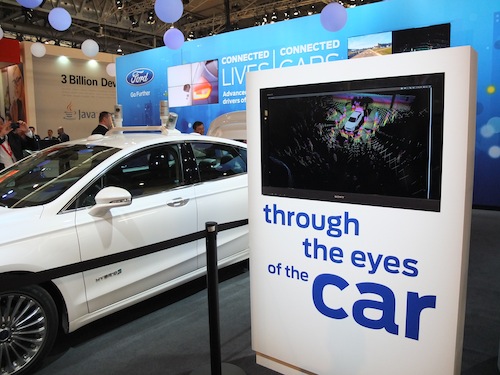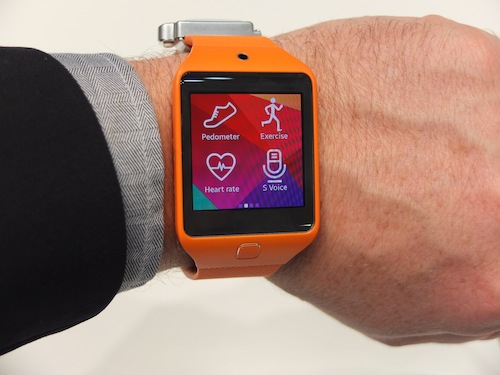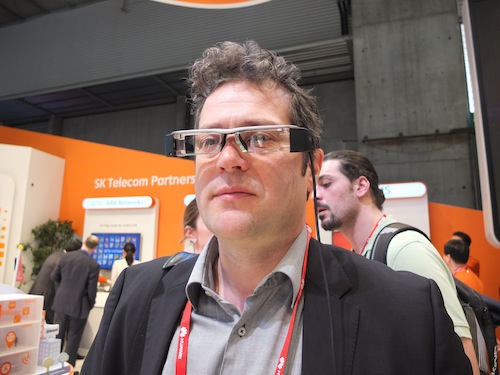If there was dominant meme at this year’s Mobile World Congress it is the importance of being connected. If 2013 was the year of the phablet, which challenged the idea that phones and tablets were separate devices, then 2014 is the year where all manner of devices were mobile-enabled.
Cars, kitchen appliances, sports equipment, livestock, aging relatives, containers, pets and infants – there were a vast array of devices and services on show which utilized a mobile connection to broadcast their location or status to owners or relatives. The Internet of Things had come to Barcelona.
connected cars
Most visible was the range of connected cars from General Motors, Ford, Toyota, Volvo, Tesla, BMW and Mercedes Benz. Each demonstration had a slightly different approach to infotainment and car diagnostics.
Some cars featured an embedded Android tablets, sitting simply and squarely where a satnav might have been; other’s such as a concept car by Mercedes Benz and QNX saw the infotainment system take over almost the entire dashboard, providing an interface into how the car performs as well as hundreds of driving related applications. The system runs a sandboxed Android environment for syncing with your personal applications while protecting the car’s innards from infection. You wouldn’t want your engine control unit (ECU) to be hacked.

tracking the old, young and furry
There was an array of GPS tracking devices with embedded SIM cards. The target markets for these varied from infants to aging relatives. The Guardian Angel by slightly eccentric Chinese device manufacturer UMEOX, is designed to be worn by a child so you can track their position when they're at school or away from home. It learns their routes automatically and calls the parent if it detects unusual behavior.
Guard2Me, on the other hand, is designed for dementia sufferers. The GPS tracker is has an embedded SIM and a companion app to be used by carers or concerned family members. The watch using a combination of GPS and cell mapping to identify its location and can roam to over 145 countries: the accelerometers detects if there is a sudden movement, such as a fall, and texts the carer. If this happens, or the wearer touches the panic button, the display on the watch shows vital medical information such as blood type and medications in case they are found by a member of the public or paramedics.
And Japanese mobile giant NTT DoCoMo showed the role that M2M devices can be used in tracking hire cars, livestock and dog. The Pet Fit service and device not only tracks the dog’s location it counts steps and calories burned. This Fitbit for furries sports a 3G SIM card, Bluetooth access point for docking and charging, and GPS for outdoor location tracking.

augmenting reality
The prevalence of Google Glass wearers among the attendees and exhibitors was bellwether on how far wearables and augmented reality had come. Metaio, a leading developer of augmented reality applications for vertical markets, were demonstrating how to layer 3D schematics over the real world. It released an SDK for developers to connect it’s AR software into the emerging wave of 3D cameras.

supporting start-ups
To help drive innovation in the Internet of Things, Orange is actively supporting start-ups in the field. This includes offering assistance for start-ups looking to industrialize their connected object prototypes and opening up its online distribution channels in 20 European countries and South Africa.
“The Orange Group has contributed to research and innovation on connected objects for many years, and continues to support business customers working on projects in this domain,” says Stéphane Richard, the Chairman and CEO of Orange, “We are convinced that connected objects will play a very important role in tomorrow’s Internet.”
Interested parties can visit http://iot.orangepartner.com/index-en.html to register their project.